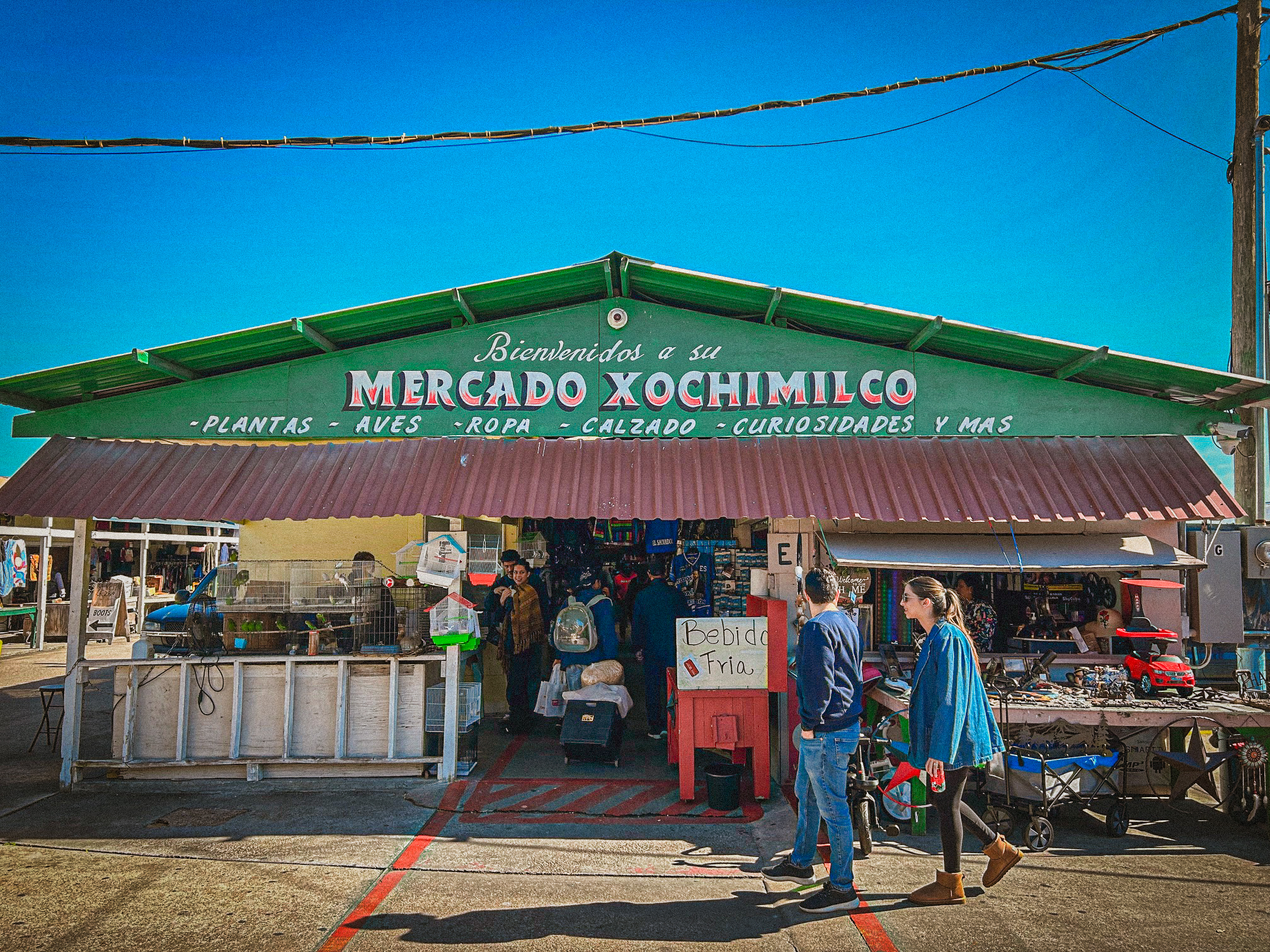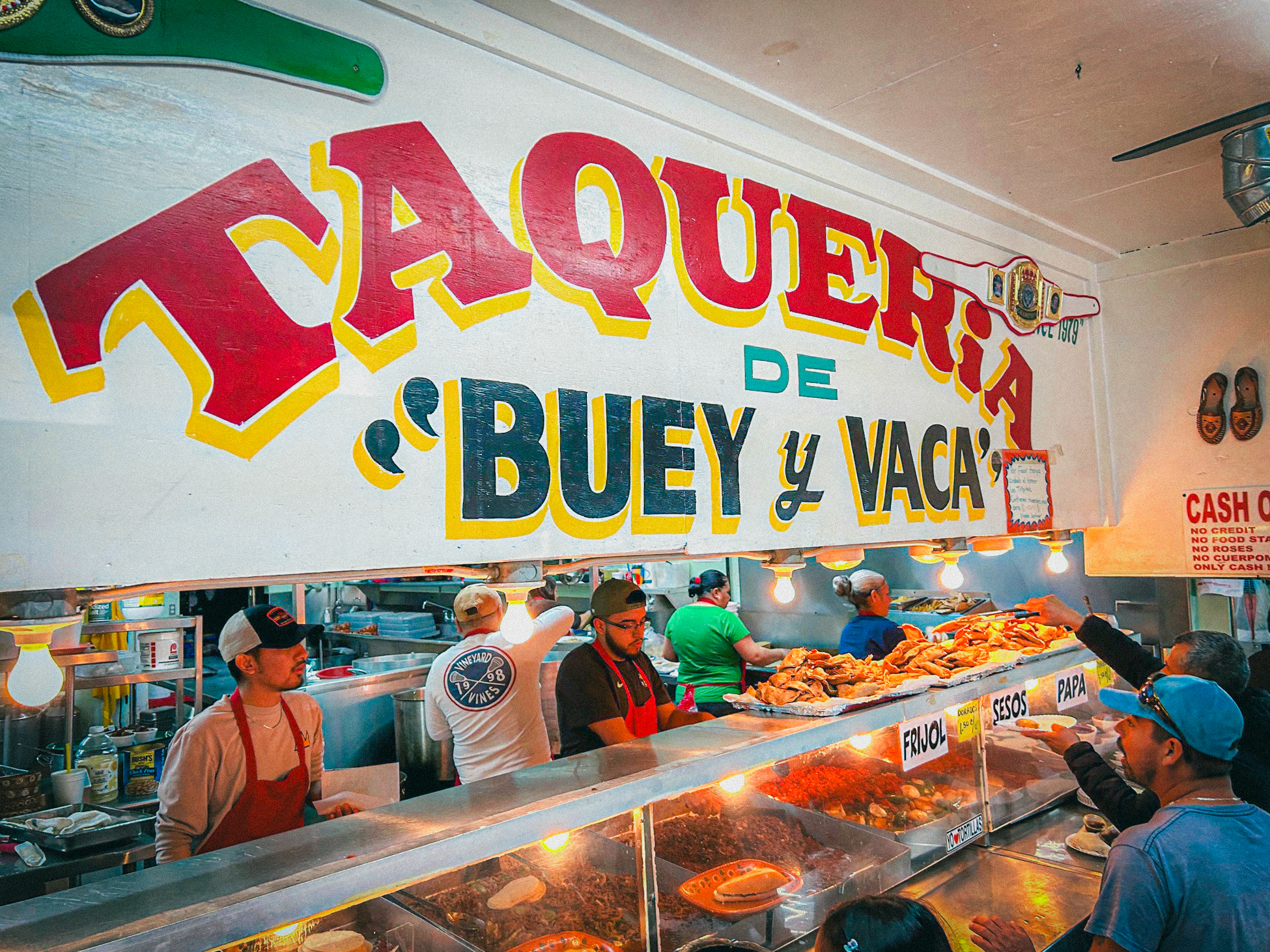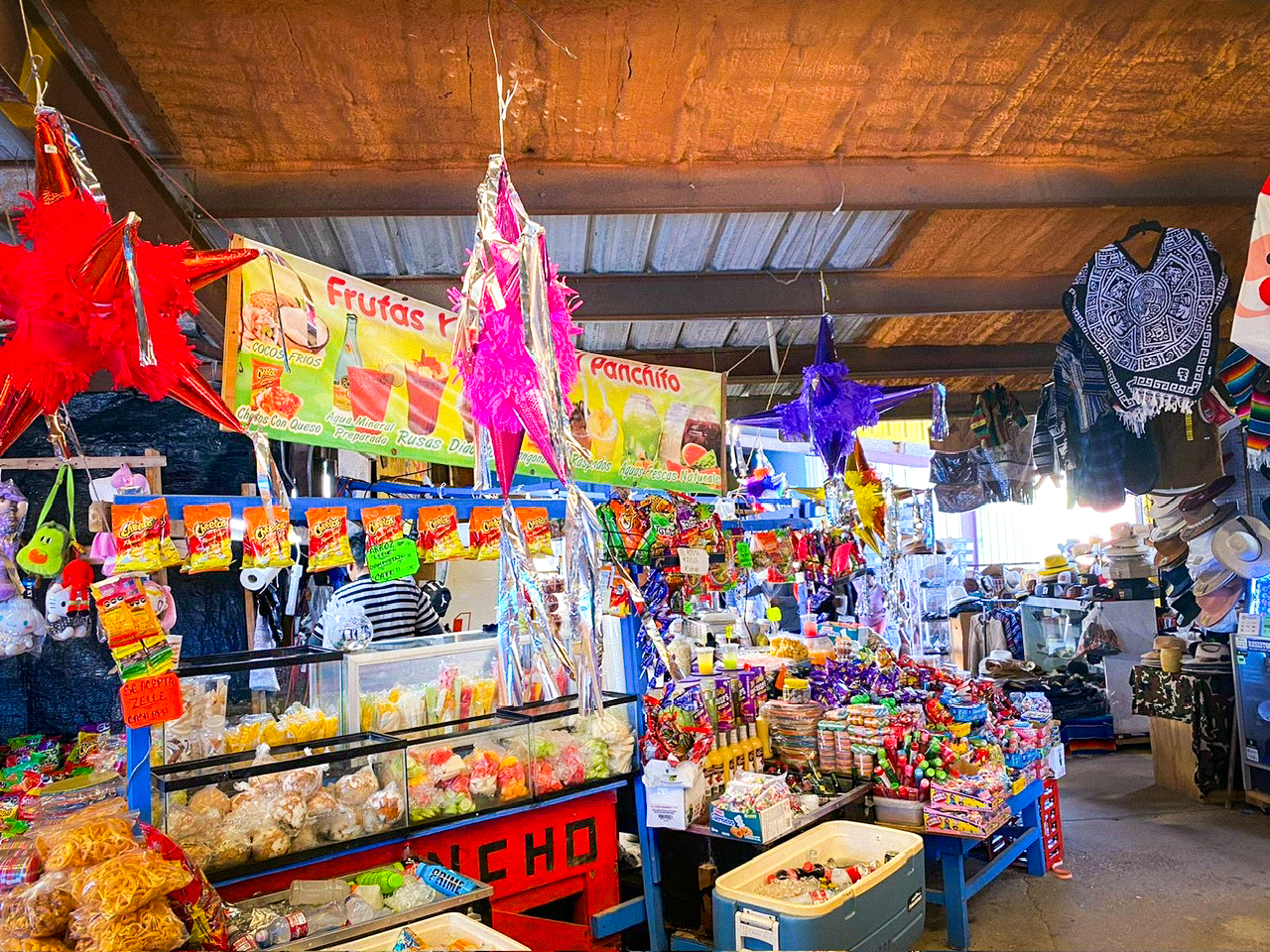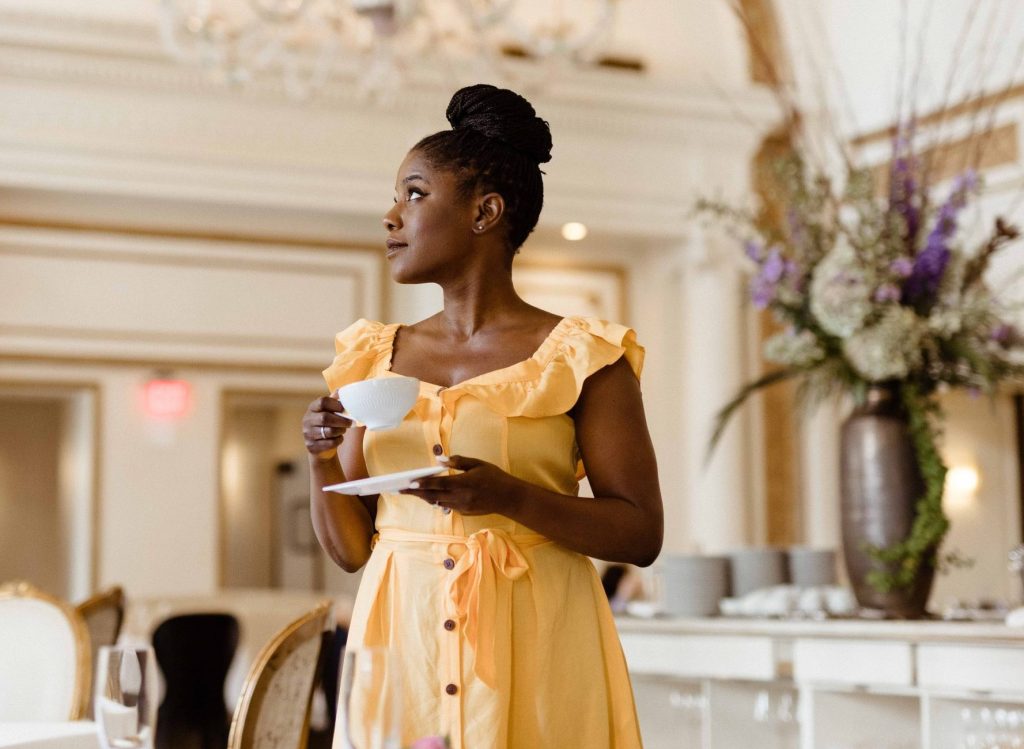
Jaime Garcia’s pulga features markets named after Mexico City’s major mercados, including Xochimilco and Tepito. Photo by Ryan Cantu.
It’s 10 o’clock in the morning, and the line of Houston traffic I’m in is particularly wide, slow, and meandering. Not the vehicle traffic on nearby Interstate 45 North or parallel Hardy Toll Road, but the foot traffic of hungry Sunday regulars who crawl toward De Buey y Vaca Taqueria‘s steaming bins of barbacoa de borrego, slow-cooked lamb that crumbles with the touch of a fork and will soon rest on a soft bed of handmade corn tortilla.
The taqueria is a good starting point for newcomers to get their bearings before venturing into the endless surrounding pulgas, or flea markets, in the heart of North Houston, just south of Aldine. There are at least five distinct pulgas at this intersection of Airline Drive and Gulf Bank Road, totaling nearly 100 acres, each pressed up against each other so tightly that the hundreds of weekend visitors can park at one for a few dollars and spend the day walking through all the others.

The comical salsa bar’s sign, asking mothers to not send their young children to get salsa. Photo by Ryan Cantu.
Like the dense sprawling pulgas, De Buey y Vaca can be daunting for first-timers. For those overwhelmed by the different merging lines or who speak little Spanish, the best option is to follow the large barbacoa de borrego sign and order meat family-style by the pound (only available Sundays). An order comes with tortillas and fixings like steamed nopal cactus with queso fresco. While in line, customers can pour complimentary bowls of charro beans or consommé, rich lamb broth for either dipping tortillas or just sipping. A large complimentary salsa bar sits below a comical sign that advises mothers not to send their young children to serve the salsa because it leaves a mess that the staff never finishes cleaning.
Jaime Garcia founded this pulga, which includes the restaurant and the market behind it, four decades ago. After moving to Houston from his hometown of Mexico City in 1975, he began his career as a butcher before a humble beginning in the restaurant business selling tacos de bistec. When he first came to these Houston markets, he says that the location of his current restaurant and pulga was “pura selva”: nothing but jungle. With the help of his father, wife, and brothers, he eventually expanded into over a dozen businesses that are centered around the De Buey Y Vaca pulga. What began as beef tacos expanded to customer favorites like pork carnitas, beef barbacoa, and the restaurant’s crown jewel: barbacoa de borrego.
“I feel very fortunate,” Garcia says. “I never imagined that this would grow to what it is today, but it was all possible with my family’s support. Now my children are carrying business forward.”

Patrons at Taqueria de Buey y Vaca can order barbacoa de borrego, which comes with tortillas and fixings like steamed nopal cactus with queso fresco. Photo by Ryan Cantu
In homage to Garcia’s hometown, the three long buildings behind the restaurant are each named after one of Mexico City’s immense mercados, such as Xochimilco and Tepito. Each building holds a long row of shops manned by hundreds of entrepreneurs who, like Garcia, settled in Houston after migrating from all over Mexico and Central America. The stands sell every type of goods imaginable, from spices to swords to earthenware to all variety of clothing. Next to De Buey y Vaca is the pulga Mercado Sabadomingo, which focuses on jewelry. Children’s carnival rides spin in front of a large dancehall that hosts live music from bands playing anything from Tejano to Colombian cumbias and a dance floor that is packed by noon.
“It’s just like the mercados in Mexico,” says Sonora native Leticia Valdez, with a bag of warm churros in hand as she crosses Airline via the many pedestrian walkways to the other pulgas: La Sinta, Sunny Flea Market, and Tia Pancha.
Garcia says that when he built De Buey y Vaca 40 years ago the pulgas to the west of Airline had already been established for decades. The aisles of these older markets are even more endless and chaotic. Standing calmly like in the eye of a storm, Mexican actor and director Bernabé Melendrez sports his cowboy hat as he visits with fans, one of whom asks for a picture with both of them holding plastic gold AK-47s like those in his action movies. The merchandise behind Melendrez includes a fraction of the over 400 movies he has acted in, including Muerte in Tijuana, which he gifted me.
Though the actor’s career has taken him all over the United States and Mexico from his native rural Zacatecas, he has chosen Houston for his production offices, citing the city’s low taxes and favorable regulatory environment compared to the film mecca of Los Angeles.

Shoppers can find everything from clothes to spices to earthenware at the pulgas. Photo by Ryan Cantu.
“You need to coexist with your fans and your people,” he says, explaining his frequent casual presence at the Houston pulgas.
The children’s carnival rides near Melendrez’s stand soon give way to a dinosaur park where kids scurry around the life-size stone animals in a frenzy that makes the animals seem anxious to break out of their frozen extinction.
Demasiado desmadre? (Too much chaos?) There are walk-up bars throughout the entire market that offer micheladas on the go before you continue down the aisles that still have no end in sight.
By the time you get to Tacos El Chilly Willy, you would have ideally walked off the barbacoa from earlier. The line is worth the wait, drawing visitors toward the large metal vat of pork that simmers in its own juices like the surrounding melting pot of the pulgas. The taquero will pull out and chop up the right cut, just say the words: maciza (the leanest meat), buche (the fatty tripe), or surtida (a mix of everything).
At the end of Sunny’s before the parking lots is Las Chenchas, owned by Lidia Pluma, a native of Ciudad Juarez who founded the business over a decade ago and runs it with her adult children. She learned her craft by working in the open-aired sprawling markets known as tianguis in Mexico City. Her truck, as well as the original brick-and-mortar south on Airline, specializes in the classic blue-corn quesadillas typical of Mexico City. These include quesadillas de huitlacoche, an ancient corn fungus that is ubiquitous in Mexico City but a rare delicacy in the U.S.
Pluma speaks of the camaraderie of the various businesses in the pulga, which she says is almost completely self-sufficient with any conceivable supply or provision available from some other stand. She proudly serves her neighboring entrepreneurs and the visitors who come from all over the state through word of mouth.
“I treat my customers as if I were serving my own children, and I tell my children that we need to serve them as if we were serving our own family at the house,” she says. “With love.”
Or, as she says in her native tongue, “Hay que hacer todo con amor.”
Visit the Houston Mercados
Hours: Though some pulgas like Sunny’s are open throughout the week, the safest bet is to visit on weekends during peak hours 9 a.m.-3 p.m.
Parking: $5 or less per vehicle per day.
East of Airline: De Buey y Vaca, 8720 Airline Drive
West of Airline: Sunny Flea Market, 8705 Airline Drive
Las Chenchas original location: 8103 Airline Drive








